
RULES & REGULATION
The rules are laid out in the International goal shot ball federation set of rules, most recently published in 2024.
1. IF A PLAYER COMMITS FOUL FOR FOUR TIMES (each 1-min suspension) .PLAYER WILL RECEIVE A YELLOW CARD (Opponent will get an advantage as one penalty) AND FIFTH TIME THE PLAYER WILL BE PENALISED WITH A RED CARD RESULTING THE PLAYER WON’T BE ABLE TO PLAY IN THAT WHOLE MATCH.
2. A PLAYER CAN HOLD THE BALL FOR A MAXIMUM OF FOUR SECONDS.
3. A PLAYER CAN’T DRIBBLE AGAIN AFTER BOUNCING THE BALL AND CATCHING IT.
4. A PLAYERS CAN TAKE UP TO TWO STEPS WITH THE BALL WITHOUT DRIBBLING, AND UP TO TWO STEPS AFTER DRIBBLING.
SUMMARY
Two teams of Five players (four court players plus one goalkeeper) take the court and attempt to score points by putting the game ball into the opposing team’s goal. In handling the ball, players are subject to the following restrictions:• After receiving the ball, players can pass, keep possession, or shoot the ball.• Players are not allowed to touch the ball with their feet. The goalkeeper is the only player allowed to use their feet, but only within the goal area.• If possessing the ball, players must dribble (comparable to a basketball dribble), or can take up to two steps for up to four seconds at a time without dribbling• No attacking or defending players other than the defending goalkeeper are allowed to touch the floor of the goal area (within seven metres of the goal). A shot or pass in the goal area is valid if completed before touching the floor. Goalkeepers are allowed outside the goal area, but are not allowed to cross the goal area boundary with the ball in their hands.• The ball may not be passed back to the goalkeeper when they are positioned in the goal area.
Notable scoring opportunities can occur when attacking players jump into the goal area. For example, an attacking player may catch a pass while launching toward the inside of the goal area, and then shoot or pass before touching the floor. Doubling occurs when a diving attacking player passes to another diving teammate.
PLAYING COURT

COURT MEAUREMENT
Length = 32 metre
Breadth = 16 metre
Goal Post height = 2 metre
Goal Post breadth = 2.80 metre
“D” Area = 7 metre
Penalty line = 7.50 metre
Diagonal = 35.77 metre
Substitute area = 4 metre
Court to Substitute area distance = 1 metre
Substitutes bench will be at least 4 metre away from centre line
Goal keeper’s restriction line = 5 metre
Free throw line = 10 metre
Centre circle = 1 metre
Foul Corner = 1 metre
Width of the marking = 5 cm and Goal inside 8 cm

Goal shot ball is played on a court 32 by 16 metres with a goal in the centre of each end. The goals are surrounded by a near-semicircular area, called the zone or the crease, defined by a line seven metres from the goal. A straight line 10 metres from the goal marks the free-throw line .Any foul that occurs inside will be taken from the both side corner (1 metre semi-circle) of the 10 meter free throw line.If a foul occurs between the centre line and the 10 meter line, player will be start from that spot.
GOALS
The goals are 2 metres high and 2.80 metres wide. They must be securely bolted either to the floor or the wall behind.The goal posts and the crossbar must be made out of the same material (e.g., wood or aluminium) and feature a quadratic cross section with sides of 8 cm (3 in). The three sides of the beams visible from the playing court must be painted alternatingly in two contrasting colors which both have to contrast against the background. The colors on both goals must be the same.Each goal must feature a net. This must be fastened in such a way that a ball thrown into the goal does not leave or pass the goal under normal circumstances. If necessary, a second net may be clasped to the back of the net on the inside.
CREASE
The goals are surrounded by the crease, also called the zone. This area is delineated by two quarter circles with a radius of seven metres around the far corners of each goal post and a connecting line parallel to the goal line. Only the defending goalkeeper is allowed inside this zone. Court players may catch and touch the ball in the air within it as long as the player starts their jump outside the zone and releases the ball before they land (landing inside the perimeter is allowed in this case as long as the ball has been released).If a player without the ball contacts the ground inside the goal perimeter, or the line surrounding the perimeter, they must take the most direct path out of it. Should a player cross the zone in an attempt to gain an advantage (e.g., better position) their team cedes the ball. Similarly, violation of the zone by a defending player is penalized only if they do so in order to gain an advantage in defending.
SUBSTITUTION AREA
Outside of one long edge of the court to both sides of the middle line are the substitution areas for each team. Team officials, substitutes, and suspended players must wait within this area. A team’s area is the same side as the goal the team is defending; during halftime, substitution areas are swapped. Any player entering or leaving the play must cross the substitution line which is part of the side line and extends 4 metres from the middle line to the team’s side.
DURATION
A standard match has two 20-minute halves with a 5- or 10-minute (major Championships/ International) halftime intermission. At half-time, teams switch sides of the court as well as benches. For youths, the length of the halves is reduced—15 minutes at ages 12 to 15, and 10 minutes at ages 8 to 11; though national federations of some countries may differ in their implementation from the official guidelines.If a decision must be reached in a particular match (e.g., in a tournament) and it ends in a draw after regular time, there are at maximum two overtimes, each consisting of two straight 5-minute periods with a one-minute break in between. If these does not decide the game either, then the winning team is determined in a penalty shootout (best-of-three rounds; if still tied, extra rounds are added until one team wins). The referees may call timeout according to their sole discretion; typical reasons are injuries, suspensions, or court cleaning. Penalty throws should trigger a timeout only for lengthy delays, such as a change of the goalkeeper.
REFEREES
A Goal shot ball match is adjudicated by two equal referees. Some national bodies allow games with only a single referee in special cases like illness on short notice. Should the referees disagree on any occasion, a decision is made on mutual agreement during a short timeout; or, in case of punishments, the more severe of the two comes into effect. The referees are obliged to make their decisions “on the basis of their observations of facts”. Their judgements are final and can be appealed against only if not in compliance with the rules. Officials can look to TV replays, as needed.The referees position themselves in such a way that the team players are confined between them. They stand diagonally aligned so that each can observe one side line. Depending on their positions, one is called court referee and the other goal referee. These positions automatically switch on ball turnover. They physically exchange their positions approximately every 10 minutes (long exchange), and change sides every five minutes (short exchange).If the referee gets injured during the match, the organizing team will immediately assign a new referee to the ground.The International Goal shot ball federation defines 21 hand signals for quick visual communication with players and officials. The signal for warning is accompanied by a yellow card. A disqualification for the game is indicated by a red card, followed by a black card if the disqualification will be accompanied by a report. The referees also use whistle blows to indicate infractions or to restart the play.The referees are supported by a scorekeeper and a timekeeper who attend to formal things such as keeping track of goals and suspensions, or starting and stopping the clock, respectively. They also keep an eye on the benches and notify the referees on substitution errors. Their desk is located between the two substitution areas.
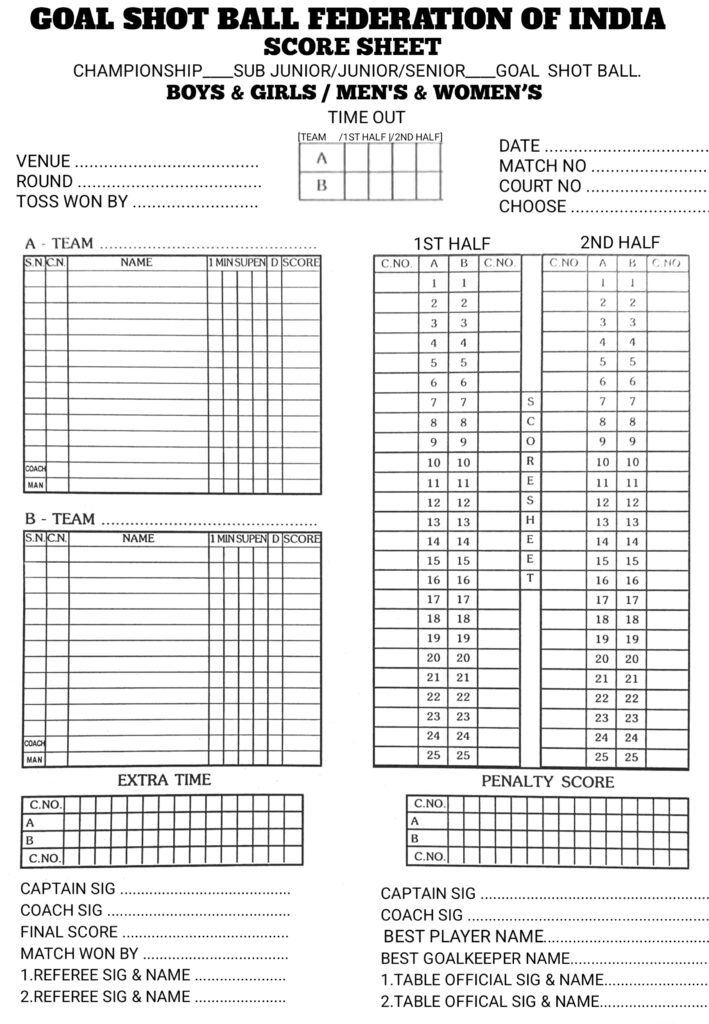
TEAM PLAYERS, SUBSTITUTES, AND OFFICIALS
Each team consists of five players on court and ten substitute players on the bench. One player on the court must be the designated goalkeeper, differing in his clothing from the rest of the court players. Substitution of players can be done in any number and at any time during game play. An exchange takes place over the substitution line. A prior notification of the referees is not necessary.
COURT PLAYERS
Court players are allowed to touch the ball with any part of their bodies above and including the knee. As in several other team sports, a distinction is made between catching and dribbling. A player who is in possession of the ball may stand stationary for only four seconds, and may take only two steps. They must then either shoot, pass, or dribble the ball. Taking more than two steps at any time is considered travelling, and results in a turnover. A player may dribble as many times as they want (though, since passing is faster, it is the preferred method of attack), as long as during each dribble the hand contacts only the top of the ball. Therefore, carrying is completely prohibited, and results in a turnover. After the dribble is picked up, the player has the right to another four seconds or Two steps. The ball must then be passed or shot, as further holding or dribbling will result in a double dribble turnover and a free throw for the other team. Other offensive infractions that result in a turnover include charging and setting an illegal screen. Carrying the ball into the seven-metre zone results either in ball possession by the goalkeeper (by attacker) or turnover (by defender).
GOALKEEPER
Only the goalkeepers are allowed to move freely within the goal perimeter, although they may not cross the goal perimeter line while carrying or dribbling the ball. Within the zone, they are allowed to touch the ball with all parts of their bodies, including their feet, with a defensive aim (for other actions, they are subject to the same restrictions as the court players). The goalkeepers may participate in the normal play of their teammates. A regular court player may substitute for the goalkeeper if a team elects to use this scheme in order to outnumber the defending players. This court player became the designated goalkeeper on the court and had to wear some vest or bib the same colour as the goalkeeper’s shirt to be identified as such. A rule change meant to make the game more offensive now allows any player to substitute for the goalkeeper without becoming a designated goalkeeper.If either goalkeeper deflects the ball over the outer goal line, their team stays in possession of the ball, in contrast to other sports like football. The goalkeeper resumes the play with a throw from within the zone (“goalkeeper throw”). In a penalty shot or directly taken free throw, throwing the ball against the head of a goalkeeper who is not moving will lead to a direct disqualification (“red card”). Hitting a non-moving goalkeeper’s head out of regular play will lead to a One-minute suspension as long as the player threw without obstruction.Outside of own D-zone, the goalkeeper is treated as an ordinary court player, and has to follow court players’ rules; holding or tackling an opponent player outside the area risks a direct disqualification. The goalkeeper may not return to the area with the ball. Passing to one’s own goalkeeper results in a turnover.
TEAM OFFICIALS
Each team is allowed to have a maximum of three team officials seated on the benches. Two referees will be on the court for the entire match, and two third umpires will be there for the TV screen.
BALL
The ball is spherical and must be made either of leather or a synthetic material. It is not allowed to have a shiny or slippery surface. As the ball is intended to be operated by a single hand, its official sizes vary depending on age and gender of the participating teams.
SIZE CLASS CIRCUMFERENCE (CM)
WEIGHT(GRAM)
2.5 MEN OVER 17 50 – 54 380 – 420
1.8 WOMEN OVER 17 48 – 50 280 – 320 BELOW 17 BOYS
1 BELOW 17 GIRLS 46 – 48 250 – 300 MINI (8 – 14) BOYS & GIRLS
GOALKEEPER-THROW
If the ball crosses the outer goal line without interference from the defending team or when deflected by the defending team’s goalkeeper, or when the attacking team violates the D-zone (seven metre) as described above, a goalkeeper-throw is awarded to the defending team. This is the most common turnover. The goalkeeper resumes the play with a throw from anywhere within the goal area.
PENALTY THROW
A 7.50 metre throw is awarded when a clear chance of scoring is illegally prevented anywhere on the court by an opposing team player, official, or spectator. It is awarded also when the referees have interrupted a legitimate scoring chance for any reason. The thrower steps with one foot behind the 7.50 metre line with only the defending goalkeeper between him and the goal. The goalkeeper must keep a distance of three metres away, which is marked by a short tick on the floor. All other players must remain behind the free-throw line until execution and the defending court players must keep a distance of three metres. The thrower must await the whistle blow of the referee. A 7.50 metre throw is the equivalent to a penalty kick in association football; it is far more common and typically occurs several times in a single game. It is thus tactically similar to free throw percentage in basketball and teams will try to have their best 7.50 metre throwers execute those throws.
PENALTIES
Penalties are given to players, in progressive format, for fouls that require more punishment than just a free-throw. Actions directed mainly at the opponent and not the ball (such as reaching around, holding, pushing, tripping, and jumping into opponent) as well as contact from the side, from behind a player or impeding the opponent’s counterattack are all considered illegal and are subject to penalty. Any infraction that prevents a clear scoring opportunity will result in a 7.50 metre penalty shot.
Typically the referee will give a warning yellow card for an illegal action; but, if the contact was particularly dangerous, like striking the opponent in the head, neck or throat, the referee can forego the warning for an immediate one-minute suspension. Players are warned once before given a yellow card; they risk being red-carded if they receive five one-minute suspensions.
A red card results in an ejection from the game and a one-minute penalty for the team. A player may receive a red card directly for particularly rough penalties. For instance, any contact from behind during a fast break is now being treated with a red card; as does any deliberate intent to injure opponents. A red-carded player has to leave the playing area completely. A player who is disqualified may be substituted with another player after the one-minute penalty is served. A coach or official can also be penalized progressively. Any coach or official who receives a one-minute suspension will have to pull out one of their players for one minutes. The player is not the one punished, and can be substituted in again, as the penalty consists of the team playing with one fewer player than the opposing team.
After referees award the ball to the opponents for whatever reason, the player currently in possession of the ball has to lay it down quickly, or risk a one-minute suspension. Also, gesticulating or verbally questioning the referee’s order, as well as arguing with the officials’ decisions, will normally risk a one minute. If the suspended player protests further, does not walk straight off the court to the bench, or if the referee deems the tempo deliberately slow, that player risks a double one minute. Illegal substitution (outside of the dedicated area, or if the replacement player enters too early) is prohibited; if they do, they risk a one minute.
WEATHER
In a league match, if there is any kind of emergency such as rain, poor lighting, etc., the match will be considered a tie and both teams will be awarded 1 point each.In a knockout match, no points will be awarded to either team in any such situation. If time permits, the match will be conducted the next day or a penalty shootout will be held. If a knockout match ends in a tie, a 05:02:05 match will be played. If it still remains a tie, then a penalty shootout will take place. In this case, a toss is mandatory.
After the toss between two teams at (20:10:20) if it starts raining after the break, and the rain continues for 1 to 2 hours but then stops, the game will resume from where it was paused.If the rain does not stop, the goal score up to that point will be considered along with the timing.If the total goals scored are less than 5, the match will go to a penalty shootout.
PENALTY SHOOTOUT RULES:
• Each team will select their three best throwers.
• The toss decision will determine the choice (of who goes first).
• If the result is not decided in the first penalty shootout, then a second round will take place with 10 players (including the goalkeeper) from each team taking penalties.
• The final match result will be based on the decision of the last toss.
BLACK CARD
A Black Card is given to a player for serious misconduct, intentional foul play, breaking of equipment’s, swearing in or out of the court ,misbehaving with organiser’s or unsportsmanlike behaviour that does not warrant a red card (ejection), but is more severe than a yellow card (warning).
# A player shown a Black Card:
> May be fined by the organisation.
>May be temporarily suspended from the tournament.Also an inquiry will be held against the player (Association may ban the player temporarily)
OFFENSIVE PLAY
Attacks are played with all court players on the side of the defenders. Depending on the speed of the attack, one distinguishes between 12 passes second time foul 6 passes , third time 3 passes and after that attack to the goal post with a decreasing chance of success.
HAND SIGNALS



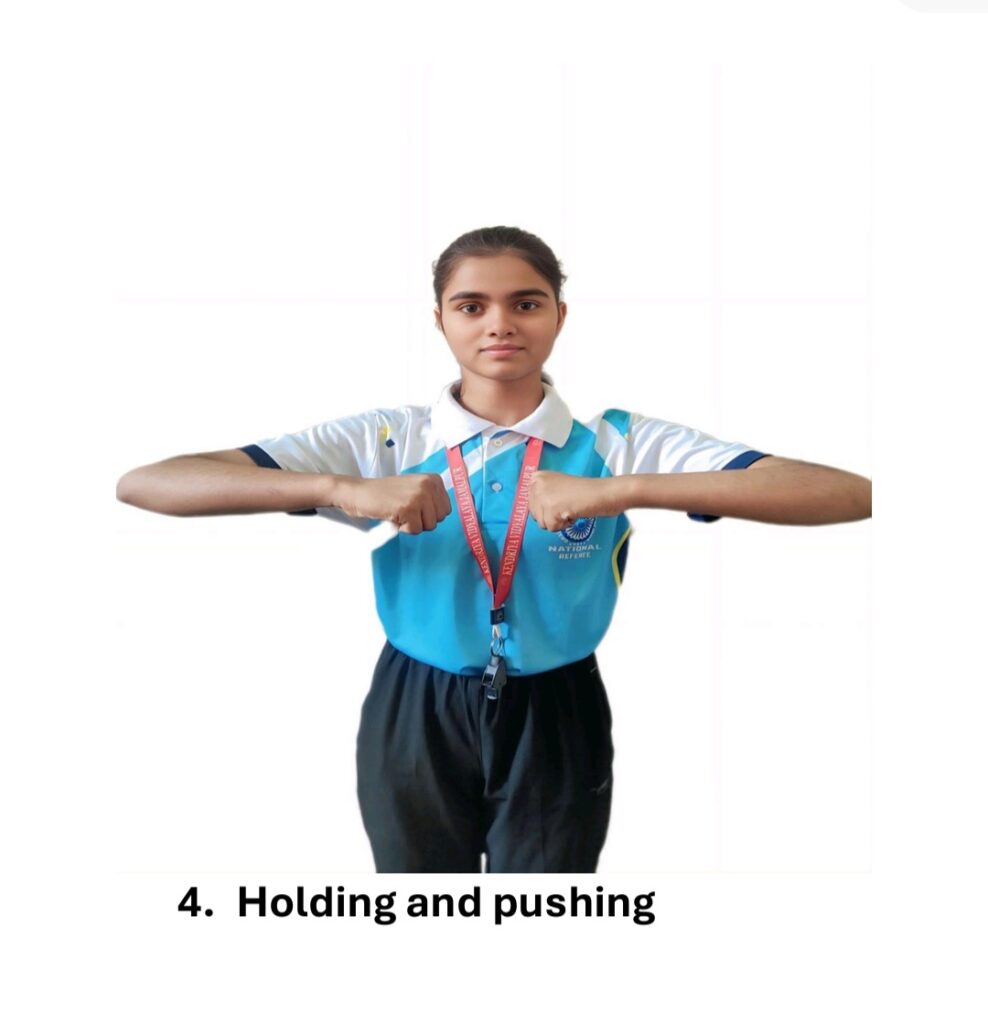
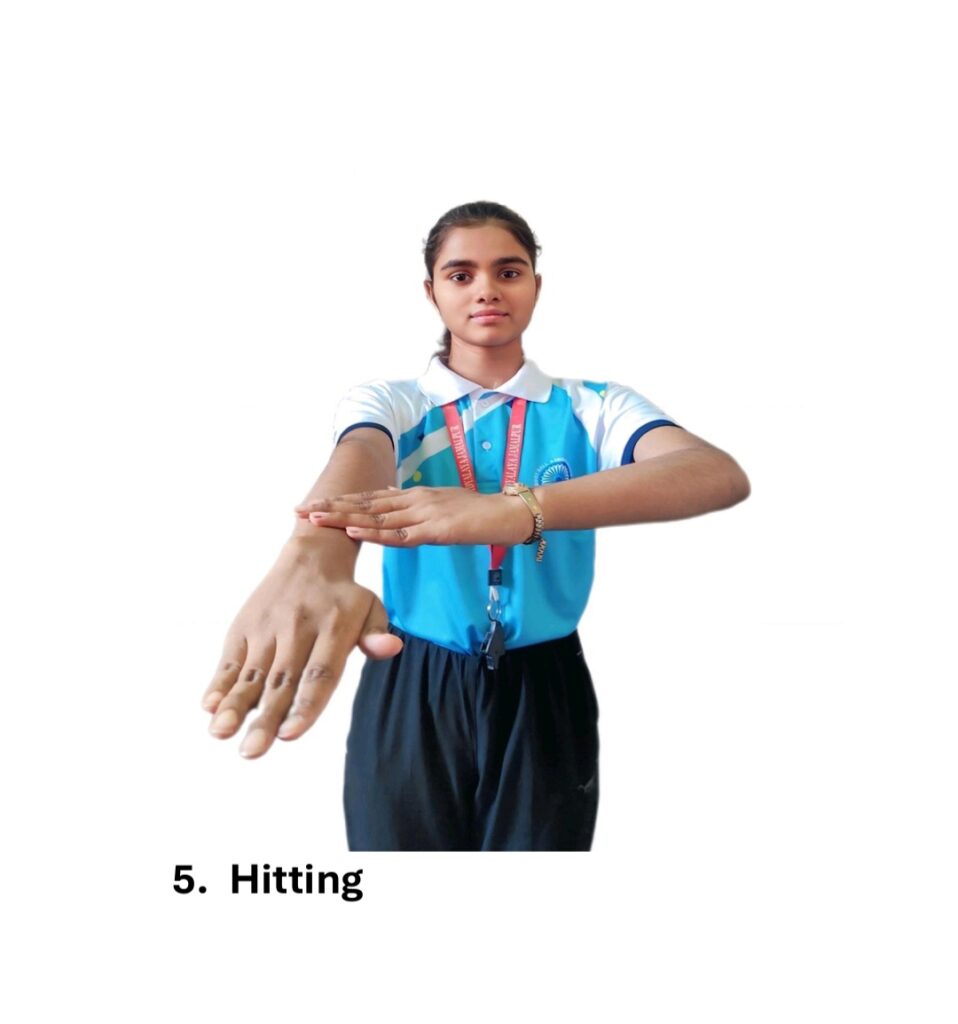
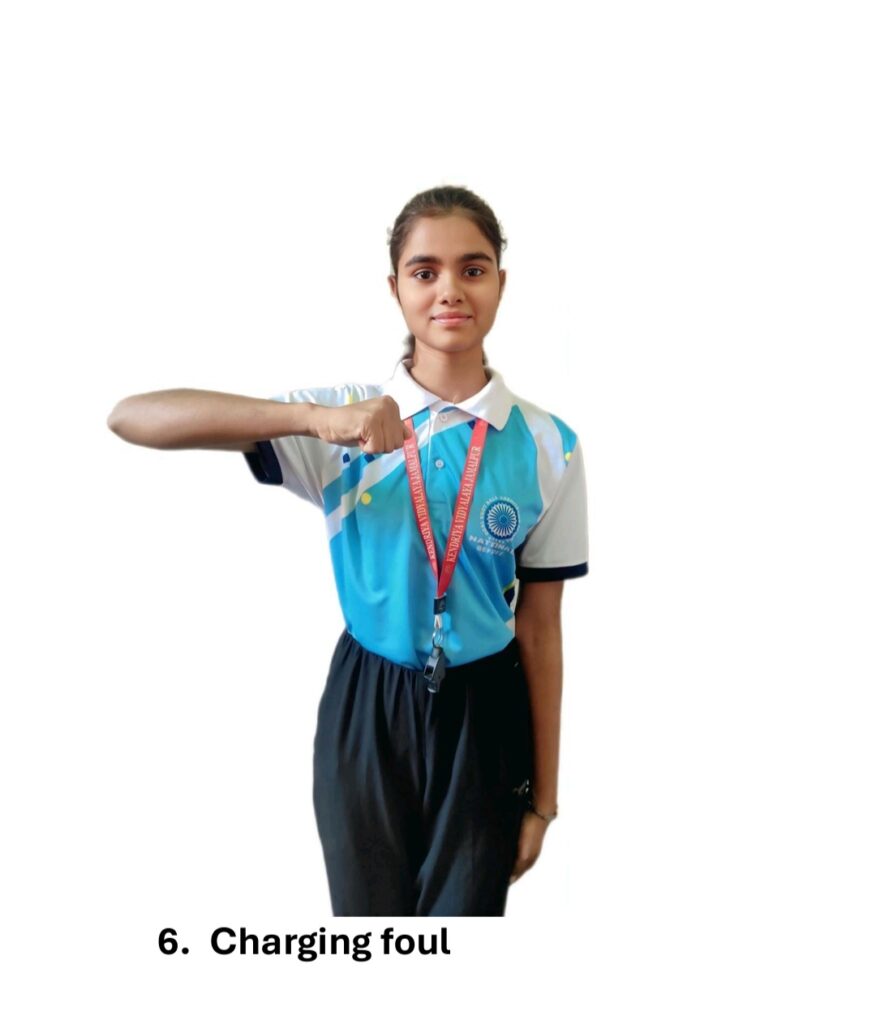

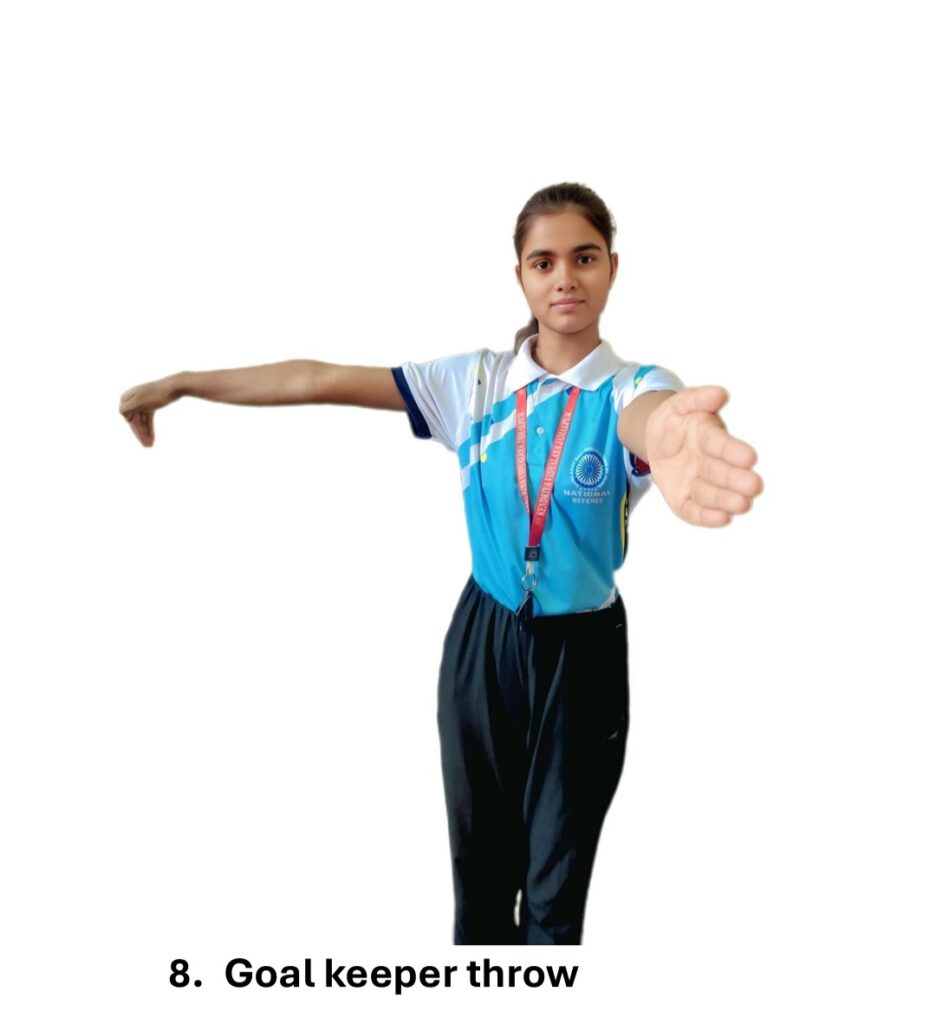
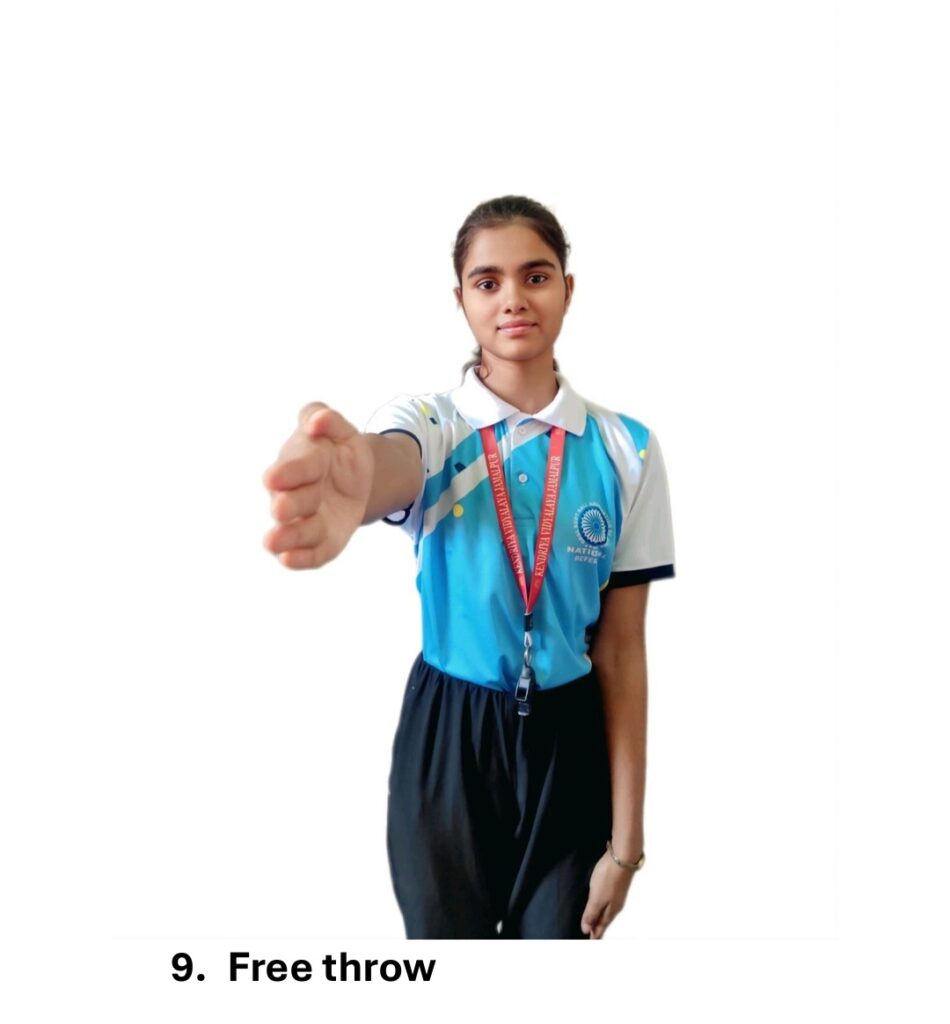

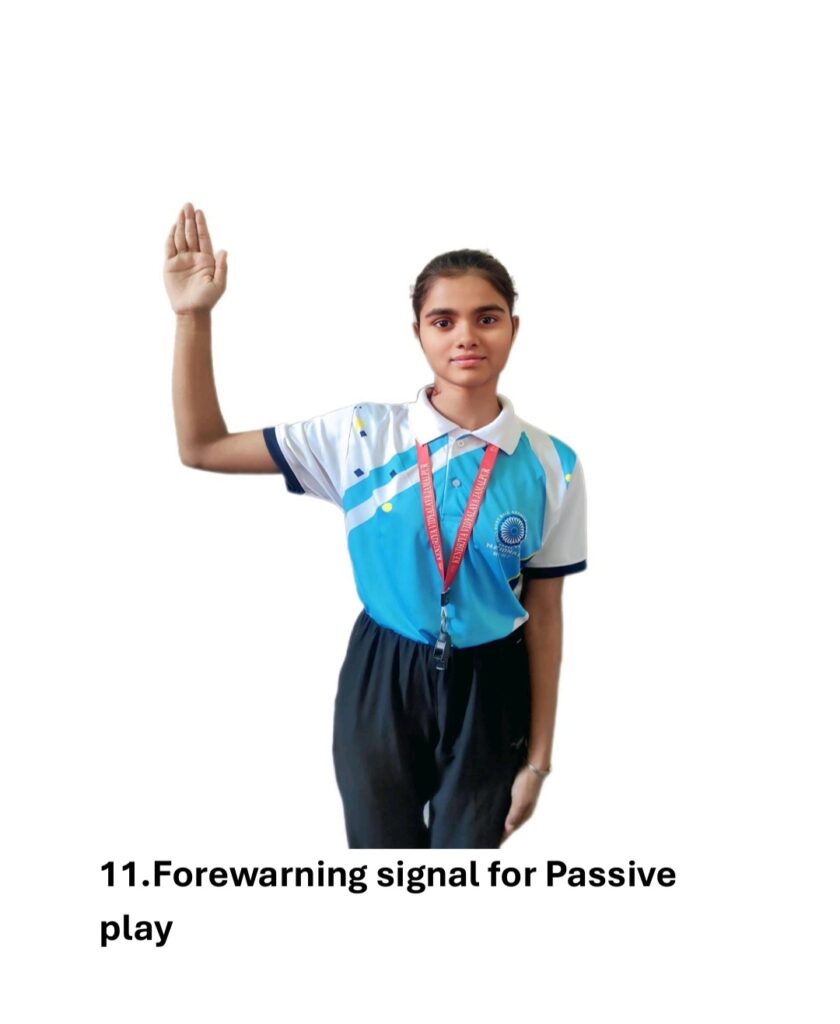
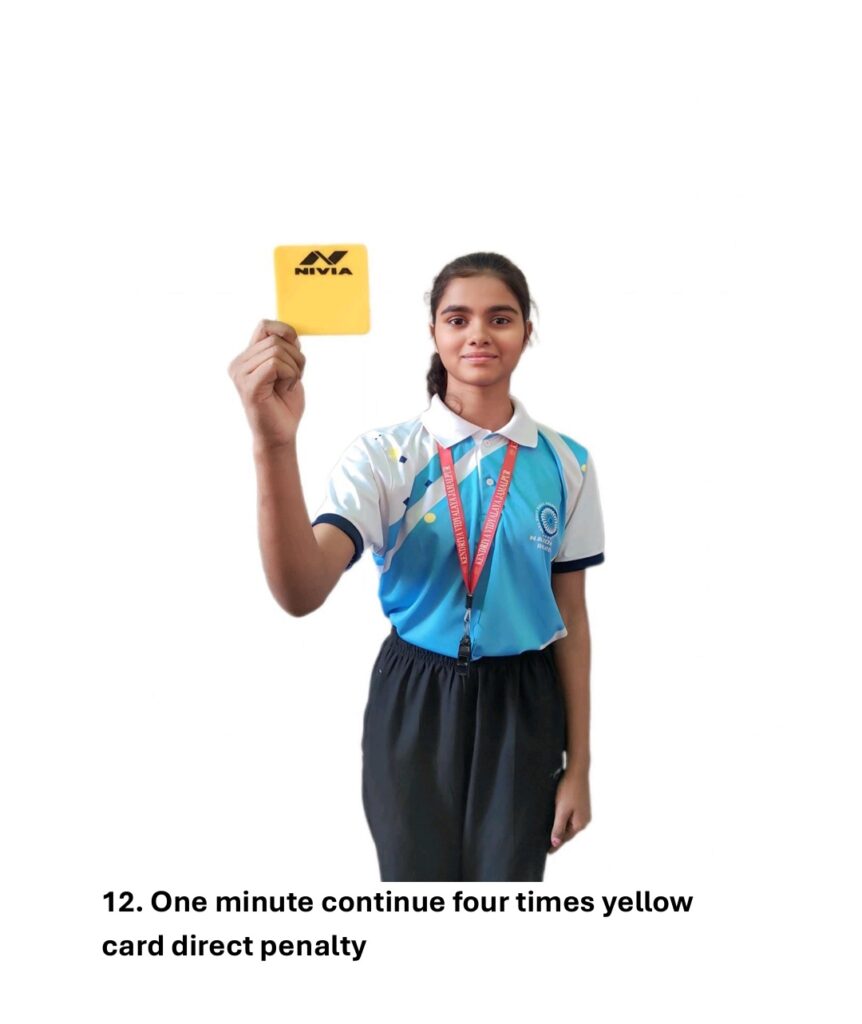



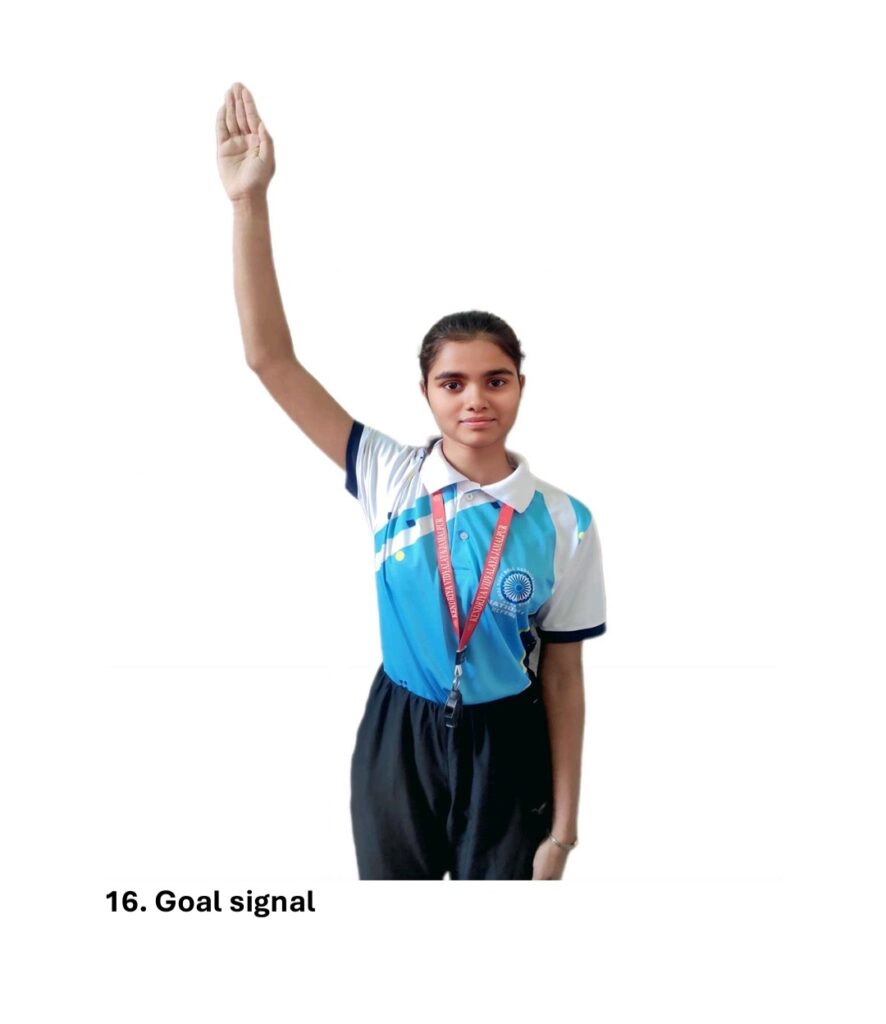


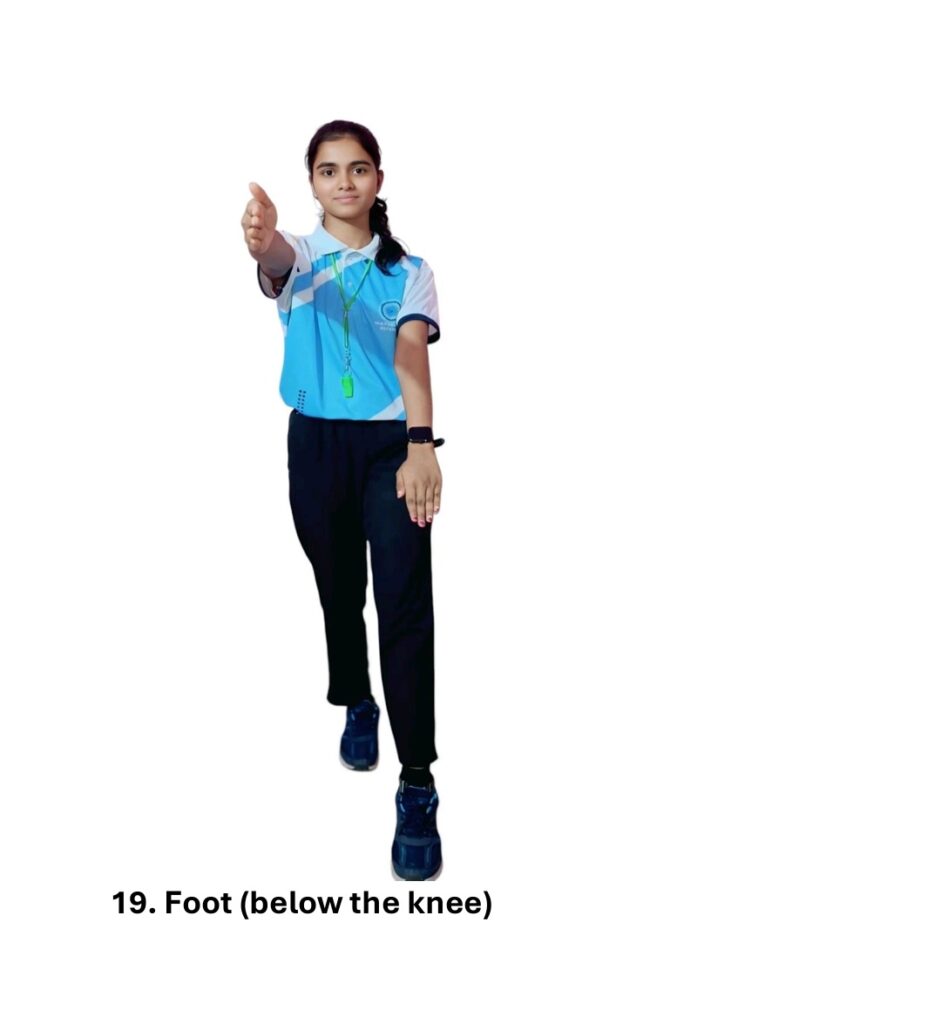


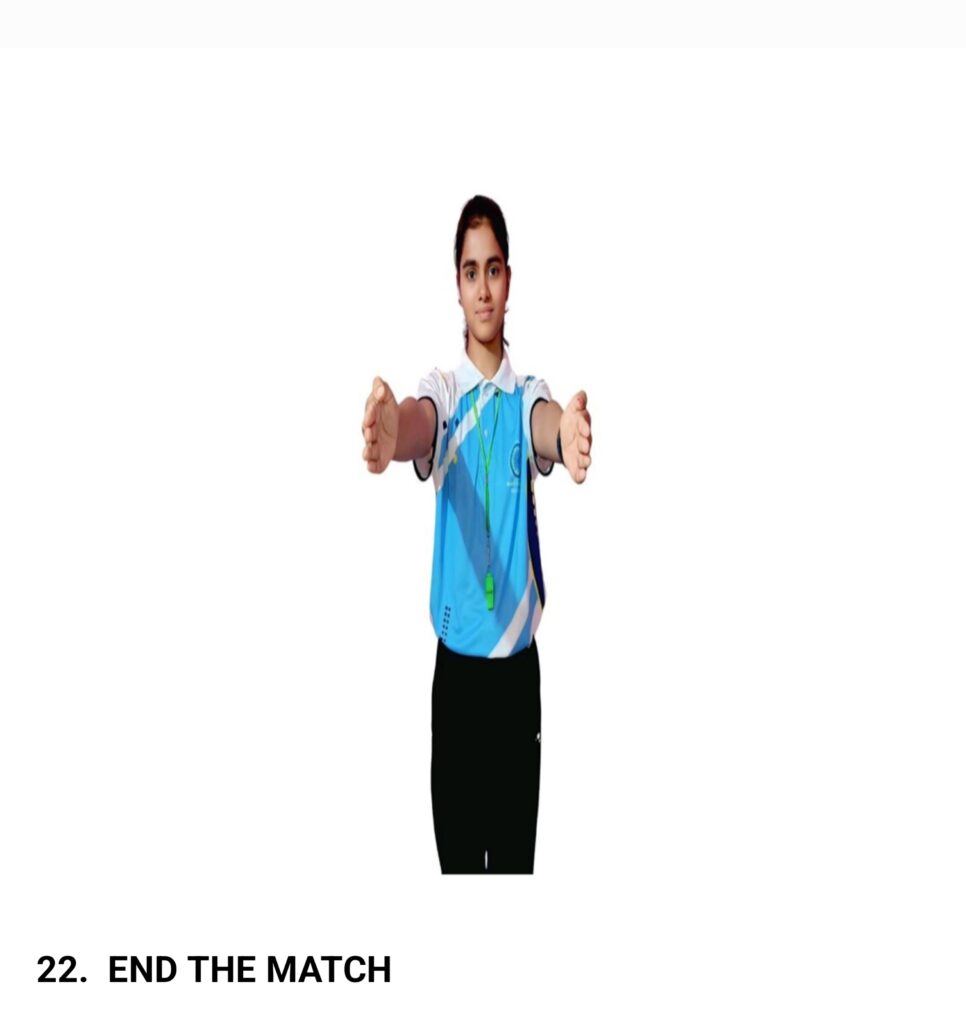
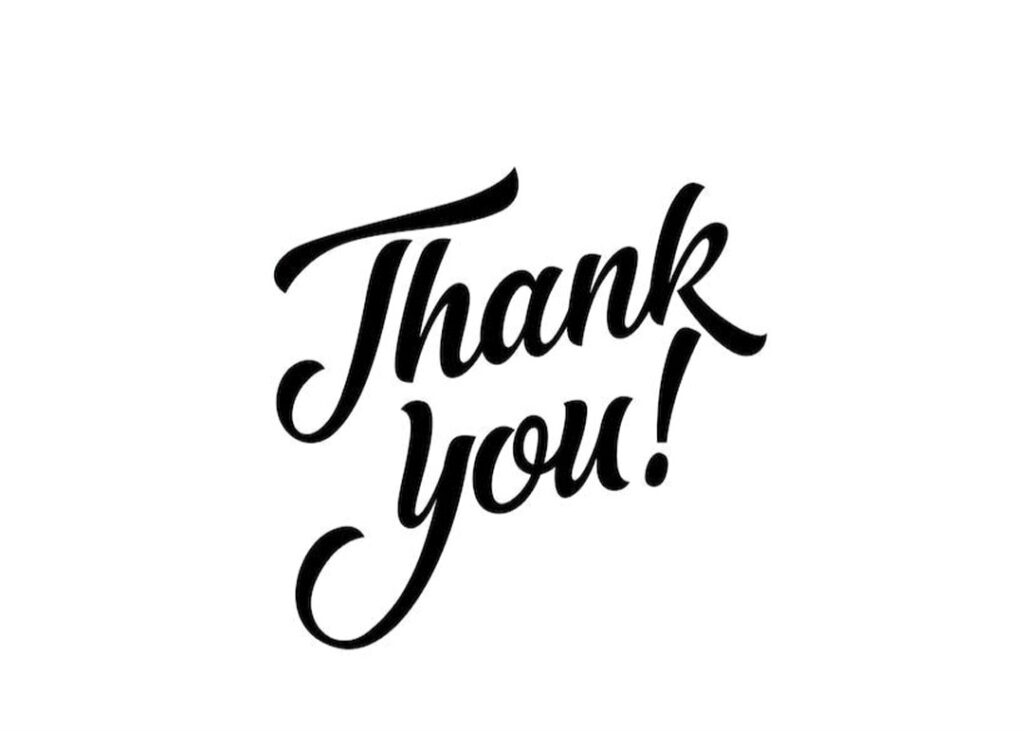
Contact Details
📩: – rajendra@gsbai.org
☎️:- +918500503938
Hey team gsbai.org,
I would like to discuss SEO!
I can help your website to get on first page of Google and increase the number of leads and sales you are getting from your website.
May I send you a quote & price list?
Bests Regards,
Ankit
Best AI SEO Company
Accounts Manager
http://www.bestaiseocompany.com
Phone No: +1 (949) 508-0277
Hey team gsbai.org,
I would like to discuss SEO!
I can help your website to get on first page of Google and increase the number of leads and sales you are getting from your website.
May I send you a quote & price list?
Bests Regards,
Ankit
Best AI SEO Company
Accounts Manager
http://www.bestaiseocompany.com
Phone No: +1 (949) 508-0277
Hey team gsbai.org,
I would like to discuss SEO!
I can help your website to get on first page of Google and increase the number of leads and sales you are getting from your website.
May I send you a quote & price list?
Bests Regards,
Ankit
Best AI SEO Company
Accounts Manager
http://www.bestaiseocompany.com
Phone No: +1 (949) 508-0277
Hey team gsbai.org,
Hope your doing well!
I just following your website and realized that despite having a good design; but it was not ranking high on any of the Search Engines (Google, Yahoo & Bing) for most of the keywords related to your business.
We can place your website on Google’s 1st page.
* Top ranking on Google search!
* Improve website clicks and views!
* Increase Your Leads, clients & Revenue!
Interested? Please provide your name, contact information, and email.
Bests Regards,
Ankit
Best AI SEO Company
Accounts Manager
http://www.bestaiseocompany.com
Phone No: +1 (949) 508-0277
Hey team gsbai.org,
Hope your doing well!
I just following your website and realized that despite having a good design; but it was not ranking high on any of the Search Engines (Google, Yahoo & Bing) for most of the keywords related to your business.
We can place your website on Google’s 1st page.
* Top ranking on Google search!
* Improve website clicks and views!
* Increase Your Leads, clients & Revenue!
Interested? Please provide your name, contact information, and email.
Bests Regards,
Ankit
Best AI SEO Company
Accounts Manager
http://www.bestaiseocompany.com
Phone No: +1 (949) 508-0277
I don’t want